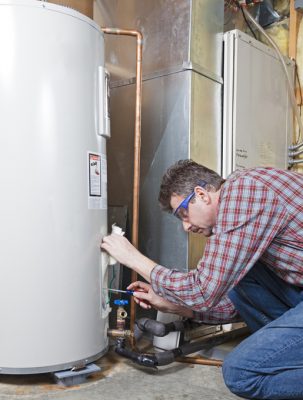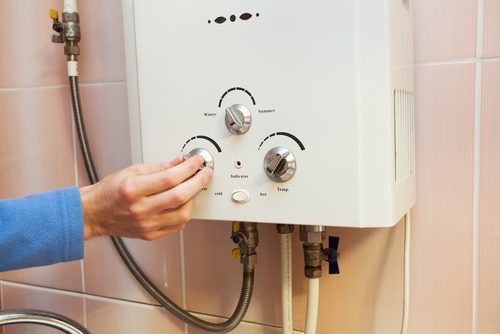Steps to Prolong the Lifespan of Your Home's Hot Water System Through Maintenance
Steps to Prolong the Lifespan of Your Home's Hot Water System Through Maintenance
Blog Article
Everyone will have their private idea about Water Heater Maintenance Tips You Can't Afford to Forget.

Hot water is important for everyday comfort, whether it's for a revitalizing shower or cleaning meals. To ensure your warm water system runs effectively and lasts longer, regular upkeep is essential. This article gives functional suggestions and insights on how to maintain your home's warm water system to stay clear of interruptions and costly fixings.
Introduction
Keeping your home's warm water system could appear challenging, yet with a couple of simple steps, you can ensure it runs smoothly for many years to find. This overview covers every little thing from comprehending your warm water system to DIY maintenance tips and knowing when to call in professional help.
Value of Maintaining Your Hot Water System
Regular upkeep not just expands the life-span of your warm water system but likewise guarantees it operates efficiently. Overlooking maintenance can bring about decreased performance, higher energy expenses, and also premature failure of the system.
Indicators Your Hot Water System Requirements Upkeep
Understanding when your warm water system needs interest can protect against major problems. Keep an eye out for signs such as irregular water temperature, unusual sounds from the heating system, or rusty water.
Comprehending Your Warm Water System
Prior to diving into upkeep jobs, it's useful to comprehend the standard parts of your hot water system. Commonly, this includes the water heater itself, pipes, anode rods, and temperature level controls.
Month-to-month Upkeep Tasks
Regular regular monthly checks can assist capture small issues before they escalate.
Flushing the Water Heater
Purging your water heater removes sediment accumulation, enhancing performance and lengthening its life.
Checking and Replacing Anode Rods
Anode poles protect against corrosion inside the tank. Examining and replacing them when worn is important.
Evaluating and Readjusting Temperature Level Setups
Adjusting the temperature level setups makes sure ideal efficiency and security.
Do It Yourself Tips for Maintenance
You can do numerous upkeep tasks yourself to keep your warm water system in leading problem.
Looking for Leakages
Regularly inspect pipes and links for leakages, as these can cause water damages and higher bills.
Evaluating Pressure Alleviation Valves
Examining the stress safety valve ensures it functions correctly and avoids excessive stress build-up.
Protecting Pipes
Insulating warm water pipelines lowers warmth loss and can save energy.
When to Call a Specialist
While do it yourself maintenance is useful, some problems require professional expertise.
Facility Problems Requiring Professional Aid
Instances include significant leakages, electrical troubles, or if your water heater is regularly underperforming.
Regular Specialist Maintenance Benefits
Specialist maintenance can consist of complete evaluations, tune-ups, and ensuring conformity with security standards.
Verdict
Routine upkeep of your home's hot water system is essential for performance, durability, and cost financial savings. By following these pointers and knowing when to look for professional aid, you can make sure a reputable supply of warm water without unforeseen disturbances.
How to Maintain an Instant Hot Water Heater
Before tinkering with your hot water heater, make sure that it’s not powered on. You also have to turn off the main circuit breaker and shut off the main gas line to prevent accidents. Also turn off the water valves connected to your unit to prevent water from flowing into and out of the appliance. 2. When you’re done, you have to detach the purge valves’ caps. These look like the letter “T†and are situated on either side of the water valves. Doing so will release any pressure that has accumulated inside the valves while at the same time avoid hot water from shooting out and burning your skin. 3. When the purge valves’ caps are removed, you have to connect your hosing lines to the valves. Your unit should have come with three hoses but if it didn’t, you can purchase these things from any hardware or home repair shops. You can also get them from retail stores that sell water heating systems. Read the user’s manual and follow it to complete this task properly. When the hosing lines are connected, open the purge port’s valves. 4. You should never use harsh chemical cleaners or solutions when cleaning your unit. Make use of white vinegar instead. It should be undiluted and you’ll probably use about 2 gallons. 5. Now flush your water heater. This task should probably take about 40 minutes. We can’t give you specific directions for this because the procedure is carried out depending on the type, model and brand of your heater. With that being said, refer to the user’s manual. 6. When you’re done draining the unit, you have to turn off the purge port valves again. Remove the hosing lines that you earlier installed on each of the water valves. Put the valve caps (purge port) back in their respective places and be very careful so as not to damage the rubber discs that are found inside these caps. 7. Now that everything’s back in place, check your user’s manual again to find out how to reactivate your water heating system. 8. Once it is working, turn one of your hot water faucets on just to let air pass through the heater’s water supply pipes. Leave the tap on until water flows smoothly out of it. https://www.orrplumbing.com/blog/2014/september/how-to-maintain-an-instant-hot-water-heater/

Hopefully you enjoyed reading our part on Tips on Maintaining a Water Heater. Thanks a lot for finding the time to browse our blog. Sharing is good. Who knows, you will be doing someone a favor. I am grateful for your time. Revisit us soon.
View More Report this page